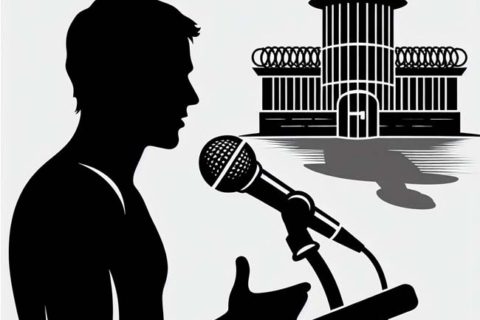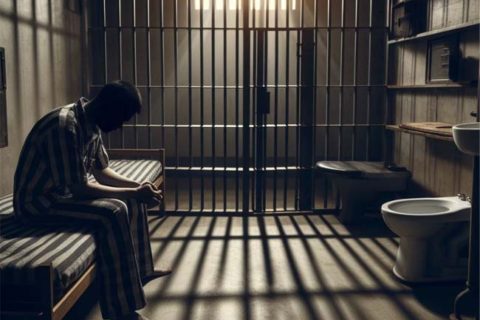In 1971, the Stanford Prison Experiment or SPE funded by the U.S. Office of Naval Research was conducted. This one was where college students or volunteers became prisoners or guards in a simulated prison environment. It was to examine the effects of situational variables on the reactions and behaviors of those who participated in it.
Apparently, the volunteers were selected after assessments of psychological stability. They were divided randomly into prisoners or guards. Those who had been assigned a guard role were asked to attend an orientation where they were given briefing and identical uniforms of khaki. Just like the real guards, they carried a whistle around their neck. They also bought a billy club everywhere that they borrowed from the police. Aside from that, they also wore special sunglasses or mirror sunglasses which prevented anyone from seeing their eyes or reading their emotions, which was good to further promote their anonymity.
Talking about the guards in the Stanford Prison Experiment, many wonder what they did at that time. So, what did the guards do in the Stanford Prison Experiment?

In general, the guards were given the task to enforce the law. Actually they had no idea how to be guards because they were not given special training on how to do that. At the time, they just did everything that they thought was right to maintain law and order in the prison and to be respected by the prisoners. The rules that they used were the ones that they made. Then, these rules applied into effect under the supervision of Warden David Jaffe, who was known to be an undergraduate from Stanford University. However, they were warned that the mission that they carried was serious and dangers might happen.
At first, there were nine guards and nine prisoners in the jail. Each of three guards worked 3/8 hour shifts. Meanwhile, three prisoners occupied each of the three barren cells around the clock. Just like the rest of the prisoners, the rest of the guards were also waiting in case they were needed.
At 2:30 AM. The guards woke the prisoners up by blasting their whistles for the first of many counts. The counts were important to make the prisoners familiar with their numbers. Besides, they were also important for the guards to control over the prisoners. At the time, they still did not feel their new roles as they were not sure how to assert authority over the prisoners.
In order to punish the prisoners that broke the rules, the guards used push-ups, similar to what Nazi used in their concentration camps. Plus, they were also the common things to punish those who were against the guards or institution. Sometimes, the guards also stepped on the backs of the prisoners while they did push-ups or asked the other prisoners to sit or step on their fellow prisoners’ back while they were doing such things.
On the morning of the second day, these guards had to deal with rebellion. Due to what the prisoners did to them, they were angered and frustrated, especially when these prisoners started to taunt and curse them. They had to deal with the rebellion themselves.
As these guards felt hopeless, they asked the rest of the guards who were waiting on stand-by call at home to come in. They held a meeting and decided to use force to treat force. First of all, they used a fire extinguisher to force the prisoners away from the doors. Then, they broke into each cell, undressed the prisoners, took the beds out, forced the leader of the rebellion to go to solitary confinement, and started to harass and intimidate them.
After temporarily crushing the rebellion, the guards had to face another problem. As it was hard for them to have nine guards on duty all the time, they decided to use psychological tactics instead of physical ones. Basically, they turned one of the three cells into a privilege cell. This kind of cell was used to reward the good prisoners. In this cell, they got their uniforms and bed back, allowed to wash and brush their teeth, and got to eat special food. As for the bad ones, they were put in bad cells.
The situation divided the prisoners because they accused the good prisoners of being informers. It made them distrustful of each other. Due to the rebellion, the guards became more solid. As the response to the threat, they started stepping up their control, surveillance, and aggression. They control everything the prisoners need or want, including going to the toilet. They often asked them to urinate or defecate in a bucket in their cell and sometimes they would not allow them to throw these things out, making the environment terrible.
After the rumor of the prison break turned out to be false, the guards harassed the prisoners again. They leveled up the humiliation they made them suffer. They did a few things such as forcing them to do menial, repetitive work, including cleaning out toilet bowls using their hands only. In addition, they also forced them to push-up, jump jacks, and other things they could think up. What made everything worse was when they increased the length of the counts to a few hours each.

A bookworm and researcher especially related to law and citizenship education. I spend time every day in front of the internet and the campus library.




